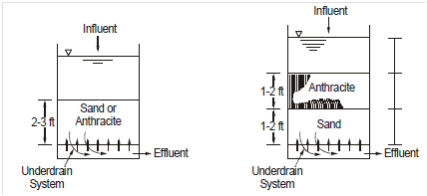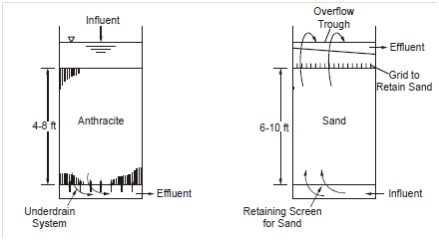Granular Medium Filtration
The filtration of effluents from wastewater treatment processes is an associatively recent practice, but has come to be hugely used for the supplemental removal of suspended solids from wastewater effluents of biological and chemical treatment processes, further to the removal of chemically precipitated phosphorus. The fully filtration operation comprises two phases: filtration and cleaning or backwashing. The wastewater to be filtered is passed through a filter bed consisting of granular material (sand, anthracite and/or garnet), along with or without added chemicals. Inside the filter bed, suspended solids holds in the wastewater are erased through means of a complex process including one or more removal mechanisms like as straining, interception, sedimentation, impaction, adsorption and flocculation. The phenomena which occur during the filtration phase are basically the similar for all kinds of filters used for wastewater filtration. A cleaning/backwashing phase differs and depending on whether the filter operation is continuous or semi continuous. Within semi-continuous filtration, a filtering and cleaning operation occur consecutively, while in continuous filtration the filtering and cleaning operations occur concurrently. The operational features of the several forms of granular medium filters generally used for wastewater filtration are described in Figure 9.

(a) Conventional Mono-medium Downflow (b) Conventional Dual-medium Downflow

(c) Conventional Mono-medium (d) Conventional Mono-medium
Deep-bed Downflow Deep-bed Downflow
Figure 9: Granular Medium Filters